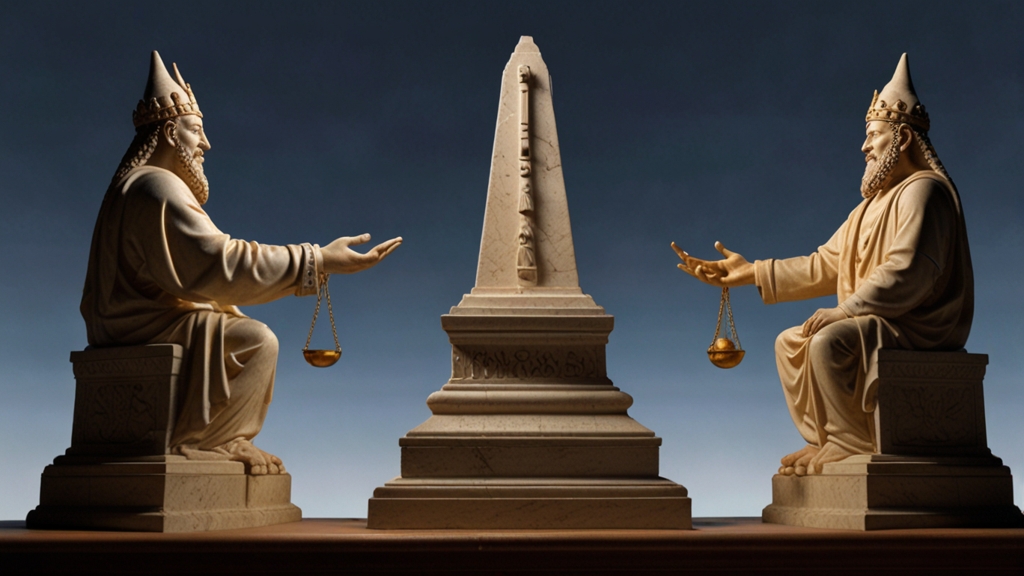Introduction to Cryptography
Cryptography, the art of protecting information by transforming it into an unreadable format, has a storied history that dates back thousands of years. While early forms of cryptography often involved simple substitution and transposition ciphers, modern cryptography is a rigorous field grounded in mathematics and computer science. Yet, the development of cryptography went through fascinating and often untold transformations. This article delves "behind the curtain" to reveal the unsung heroes and groundbreaking innovations that have shaped the cryptographic landscape we know today.
Early Innovations
The earliest known methods of cryptography can be traced back to the Greeks and Romans. The famous "Caesar Cipher," attributed to Julius Caesar, was a substitution cipher where each letter in the plaintext was shifted a certain number of places down the alphabet. While simple by today’s standards, this innovation was revolutionary in its time and formed the basis for many future cryptographic algorithms.
"The Caesar Cipher was the cornerstone of cryptographic innovation in ancient Rome, effectively used to secure military communications."
Another notable early innovation was the "Scytale" used by the Spartans. This involved wrapping a strip of parchment around a staff and writing a message across it. Once unwrapped, the message would be unintelligible unless the recipient had an identical staff to correctly interpret the code.
The Middle Ages and the Renaissance
During the Middle Ages, cryptography evolved significantly. The Arab mathematician Al-Kindi is often credited with the first recorded algorithm for breaking substitution ciphers, an early form of cryptanalytic attack known as frequency analysis. He realized that certain letters and combinations appear with predictable regularity in different languages, providing a way to crack otherwise secure codes.
In the Renaissance era, the vision of cryptography broadened. One of the key figures was Leon Battista Alberti, who developed the first polyalphabetic cipher, using multiple substitution alphabets. This was an important step towards increasing the complexity and security of encrypted messages.
The Road to Modern Cryptography
The 20th century saw a flurry of activity in cryptographic innovation, driven largely by the needs of World Wars I and II. Perhaps the most famous cryptographic device of this era was the German Enigma machine, a complex electromechanical rotor cipher machine used to protect German communications. The Allied efforts to decrypt Enigma-encoded messages were spearheaded by mathematicians like Alan Turing, whose work in breaking Enigma's encryption is often cited as a turning point in the war.
"Alan Turing's groundbreaking work on the Enigma machine not only helped end World War II but also laid the foundational principles for modern computer science and cryptography."
Post-War Developments and the Computer Age
After World War II, cryptography entered the digital age. The advent of computers provided new tools for creating and breaking codes. In 1976, Whitfield Diffie and Martin Hellman introduced the concept of public-key cryptography, a revolutionary idea that eliminated the need for a shared secret key. This development paved the way for secure digital communications, including the protocols that underpin today's internet security.
Another seminal figure is Claude Shannon, often called the father of information theory. His work provided a theoretical basis for communication and cryptography, including the proof that perfect secrecy is possible (though difficult to achieve in practice).
Modern Innovations
With the rise of the internet, cryptography has become ever more crucial. Innovations like the RSA algorithm, introduced by Ron Rivest, Adi Shamir, and Leonard Adleman, rely on the mathematical difficulty of factoring large prime numbers to secure data. Another vital development is the evolution of hash functions, which are now integral to everything from password storage to blockchain technologies.
"The RSA algorithm transformed the field of cryptography, offering a robust method for securing digital communications and laying the groundwork for the modern internet."
Today, quantum cryptography represents the frontier of the field. Leveraging the principles of quantum mechanics, this cutting-edge technology promises unprecedented levels of security, potentially safeguarding information against even the most advanced future threats.
Conclusion
The story of cryptography is one of constant evolution and adaptation, shaped by the unending quest for secure communication. From ancient ciphers to cutting-edge quantum cryptography, the innovations in this field continue to protect our most vital information. As we look forward to future breakthroughs, it's essential to remember and celebrate the brilliant minds and groundbreaking concepts that have brought us to this point.











